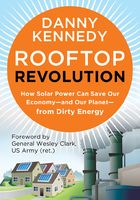
An Encouraging Example of Leadership
Nasheed, who served as the fourth president of the Maldives from 2008 to 2012, was the first democratically elected president of this small Muslim nation in several decades. (He was forced to resign in February 2012, in a coup d’état.) His predecessor was a ruthless dictator who had had Nasheed tortured and placed in solitary confinement for being an activist and a dissident journalist. When Nasheed became what he calls the “accidental president” following a political campaign that was given great momentum by the 2004 Indian Ocean tsunami, he set about facing the biggest threat to his country: climate change.
Nasheed famously brought attention to the cause by holding an underwater cabinet meeting near a coral reef (probably one of the most photographed government events in the country), in which he and his ministerial colleagues wore SCUBA gear while signing documents with waterproof ink against the backdrop of a coral reef. He championed climate protection at the international conferences on the subject during his presidency. Not a lot came of his efforts to broker a deal at the UN Copenhagen Summit in late 2009, except for a documentary film on the subject titled The Island President and some money to build sea walls in the Maldives against the rising tide. So perhaps his greatest effort to respond to the climate crisis was to make the Maldives the first carbon-neutral country on Earth.
Toward this end Nasheed jumped at the offer we at Sungevity made, in conjunction with our friends at 350.org, to put a solar electric solution on the presidential palace, a beautiful colonial building built by the British in downtown Malé, the capital of the Maldives and home to about one-third of its population. Most of these people probably pass the palace every day on their way to work or school or the beach; it’s on a small island of 150,000 people, and the Muliaage, as it’s known in the local language, is right in the middle of the city. As such it was the ideal place for the president to kick off his efforts to take his country solar.
I was fortunate enough to fly there in October 2010 and work with a couple of colleagues on the installation of the 11.5-kilowatt solar system, which consisted of 48 solar panels—which the president himself helped us install—and would cover the electricity load of more than two average American homes. They would offset 195 tons of carbon and save the Maldives $300,000 in electricity cost over the life of the system. We spent about a week on the roof and in the attic of this magnificent old building, wiring the first solar electricity into the nation’s grid with the help of some of the palace’s maintenance team. We had an opening ceremony, of course, which the president attended, as did most of the media on the island. We also held a telephone news conference, for which only a few of the many members of the international media we’d invited dialed in.
And therein lies the rub: Here you had an articulate and charismatic world leader, a Nelson Mandela for his country, and a Muslim president of a democracy that went through a revolutionary uprising five years before the famous Arab Spring of 2011, and yet there was almost no interest in his efforts to address climate change or create a solar economy. It seems that politics dictates that this is a nonstory for most of the media. Yet President Nasheed carried on. A little more than a year later, he was back on a roof, personally installing a solar system on the administrative buildings of his government just down the street from the palace. And, more importantly, he negotiated funding with the World Bank to create a program that would install wind and solar power to displace most of the diesel-based electricity in the country.
Now despite being deposed, Nasheed is continuing the work and agitating for fresh elections, and his efforts will be key to his country’s survival. As in many island economies, right now almost all the electricity in the Maldives is derived from burning diesel in huge generators housed in shipping containers. This causes horrendous air pollution and exorbitant costs per kilowatt-hour. As discussed earlier, solar succeeds best where the true cost of fossil-fuel-based electricity is accounted for, and on an island such as Malé that is a truly heavy burden on the community. The numbers are astounding: one-quarter of import expenditures are on diesel fuel, and the Maldives utilities are literally running out of land on which to place the containers that house the diesel generators.
Moreover, this model of fossil-fuel import dependency is entirely untenable from a national security point of view and as an economic proposition going forward. If the price of oil were to exceed $100 per barrel for an extended period of time, the country would go bankrupt. Then the oil industry would no longer deliver the fuel by ship, and the country would be left without electricity. This scenario is already playing out in other island communities: it’s the curse of dependence on fossil-fuel electricity. So the president’s push to get solar energy adopted across the country makes sense; indeed, it makes dollars and sense.